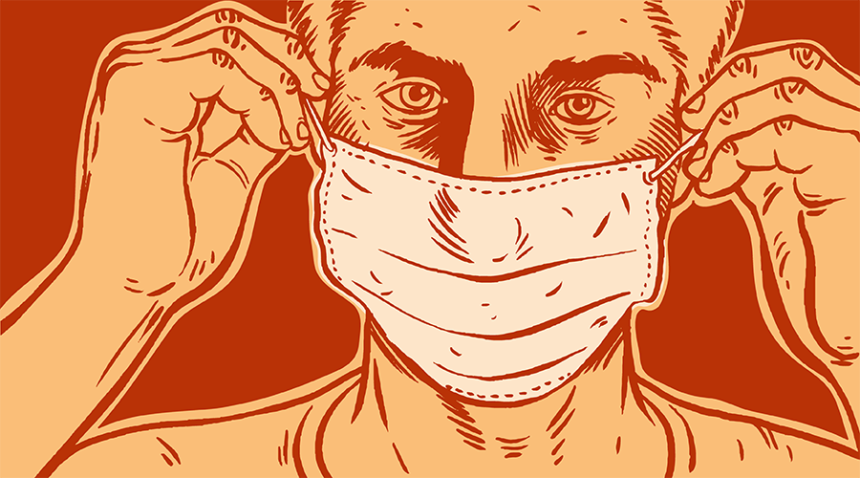Wearing cloth face masks and coverings in public settings is important because it helps prevent the spread of coronavirus disease 2019 (COVID-19), but masks can make communicating more difficult.
“The physical barrier actually changes the sound waves that are reaching your ear,” says UNC Health audiologist Patricia Johnson, AuD. “High pitches aren’t able to make it through the material, so you start losing access to consonants, particularly ‘f,’ ‘s,’ ‘sh,’ ‘th,’ which carry a lot of the weight in the clarity of the words that we hear.”
For example, “wish” may sound like “with.” Wearing a mask also prevents lip reading and some facial expressions. This can be especially challenging for the deaf or hard of hearing, but people with normal hearing also will find understanding someone in a mask a bit trickier.
“We all do lip reading,” Dr. Johnson says. “When we communicate, our eyes and ears are closely integrated. And once you lose the lips, you’re forced to rely on your hearing, which is degraded by that physical barrier.”
When you cannot read someone’s facial expressions, it’s hard to gauge their emotions.
Of course, these challenges don’t change the fact that during a pandemic, wearing masks can help save lives. So don’t give up on communication. Just try these four tips.
- Don’t shout.
Speaking in an unnatural way—such as shouting—is not sustainable and often distorts the quality of speech more.
“Shouting can make it worse even though that’s our first instinct when we’re trying to help someone hear,” Dr. Johnson says.
Stick to your regular volume for the best results and maintain good eye contact.
- Take your time speaking.
Allow a little more space between your words to enable the listener to better follow your conversation.
“Slow down the rate of your speech slightly, and make an effort not to hurry when speaking,” Dr. Johnson says.
You also can use a free speech-to-text app that translates speech into text in real time.
“The accuracy of speech-to-text apps has gotten very, very good,” Dr. Johnson says. “So if you are hearing-impaired, or you’re struggling hearing someone, have them speak into your phone, and you can then read what they’re saying on the screen.”
- Ask follow-up questions.
Follow up with the listener to ensure he or she understood the content of your message. Sometimes people will smile and nod even when they didn’t understand all that was said.
“Follow up with written communication whenever possible,” Dr. Johnson says.
If you struggle to understand what someone is saying to you, ask him or her to repeat it.
“You might ask them to rephrase what they said if you cannot understand them,” Dr. Johnson says. “Or ask them to clarify and try to be specific about what part you did not understand.”
- Be mindful of your environment.
Think about your environment and try to move away from any type of distracting noise, especially other people talking.
“Lip reading (which you cannot do) usually helps when there’s background noise of any kind, whether you have hearing loss or not,” Dr. Johnson says. “If you can move away from distracting noise, that goes a long way.”
For the latest information on COVID-19, visit the CDC website and the UNC Health COVID-19 Resources page, and follow UNC Health on Twitter, Facebook, Instagram and YouTube.

